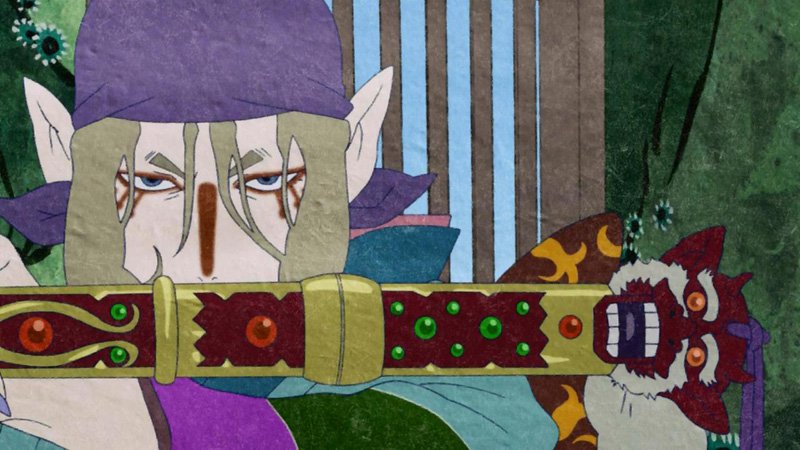
Japanese animation has a long and storied history. Decades of tradition in such aspects as narrative structure, technique , music and animated photography has seen both a strict adherence and many changes. The stories themselves have drawn from a very rich well of national history and mythology. These are also combined with a unique and often uncompromising look into the future of the human race and the planet we live on.
And for a long time, most anime was created in a very similar manner. Not so say the stories themselves weren’t unique but in order to maximize audience as well create a strong aesthetic background for artists to follow, anime often times had a similar look. After so many titles were created, both feature films and countless long-running series, character design, landscapes and general world-building could be seen as copied and too similar.
But sometimes artists envision their stories outside the avenues afforded to them. A wealth different ways to use line, light, movement and even specific paints, oils and colouring tools. Or to draw inspiration from, such as western comics or more ancient artistic mediums. Sometimes, new technologies can bring life to new storytelling and animation techniques.
CGI especially has combined with traditional cel animation to produce truly original visual situations. And sometimes, artists simply want to create something new, they must achieve telling a story in a completely new way. Here are ten examples of anime told in a unique style.
10. Dead Leaves (Hiroyuki Imaishi, 2004)
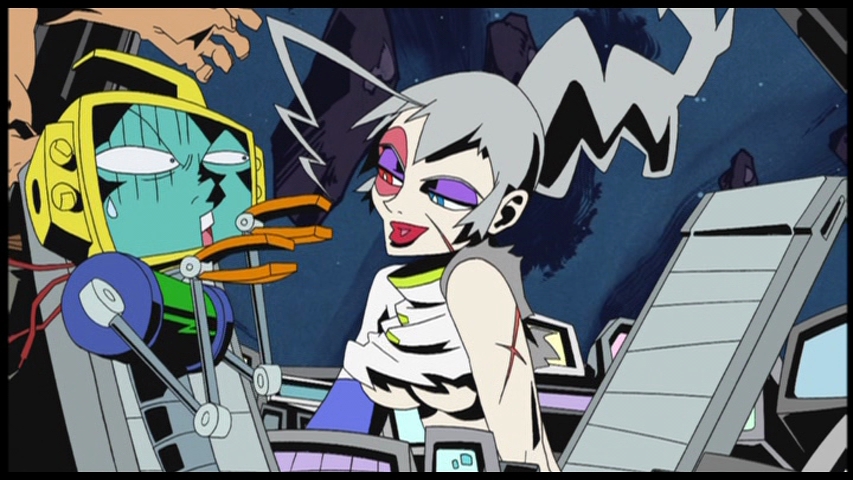
Two physically demented yet gifted renegades, Retro and Panda, embark on a small scale crime spree before being caught by authorities and sent to the notorious prison system, Dead Leaves, which is located on the severely damaged lunar surface. Retro has a television set for a head and no memory of his former life.
Panda has a panda-like mutated birthmark on her face which causes her to suffer from both extreme flashbacks and visions of what’s to come. They meet various other inmates of Dead Leaves, including Chinko, who owns a massive steel drill where one would usually have a penis.
While planning their escape from the facility, they give birth to a child, who exits the wound with machine guns in hand and ages so rapidly he becomes a frail old man before our story (which runs at a tight fifty-five minutes) ends. They also discover truths about their past and role within the facility whilst battling the vicious warden, Galactica.
‘Dead Leaves’ moves with such a propulsive flare, one can be forgiven to miss something present in each scene. It is animated with a powerful, voracious sense of movement and momentum. Rarely is It uses a pulpy, bright colour scheme contrasted with deep shadows and very dystopian, geometric patterns.
The scenes are often swift, cut with a disorientating sharpness. Characters and objects move with jerks and twists, not fluid motions and this works to accent their often strange and obtuse dialogue. It is pure animated anarchy.
9. Ping Pong the Animation (Masaaki Yuasa, 2014)
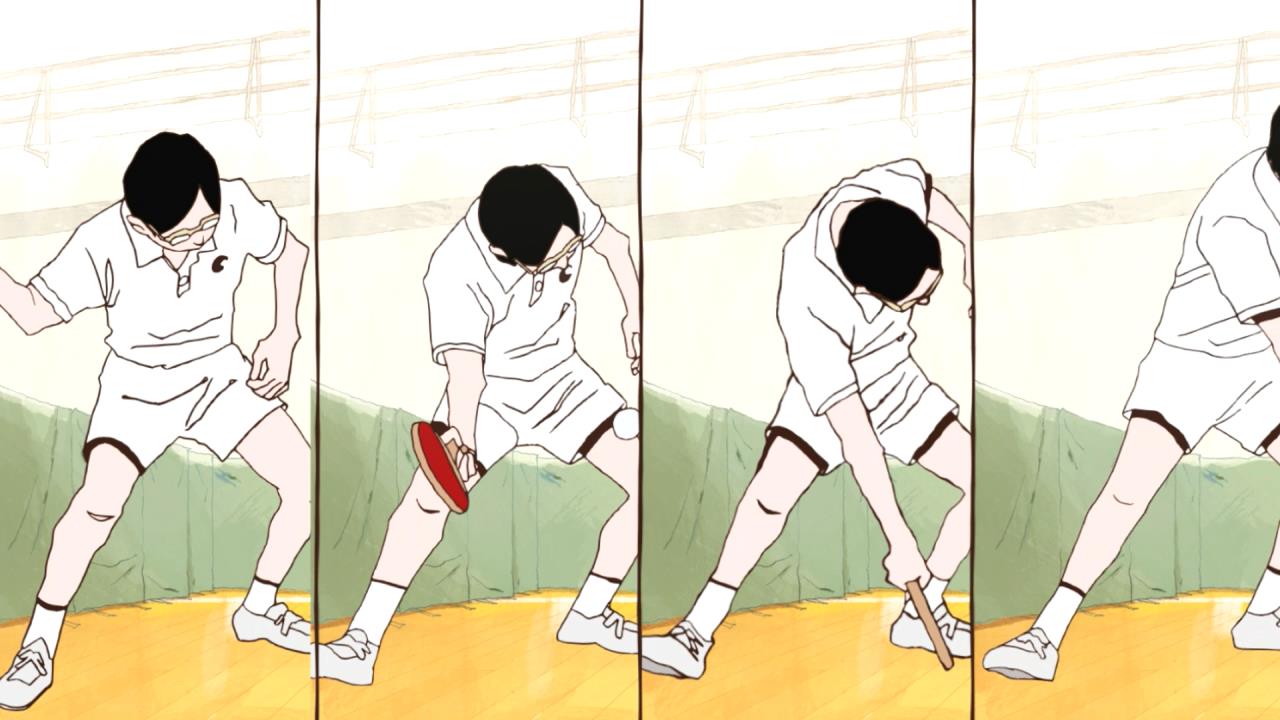
This director has two stories on this list, a feature and this series which ran for eleven episodes, and it shows his desire to animate outside the box. Ping Pong tells the tale of a group of four young athletes trying to become the best in the world. But beyond just the game, the series explores what the characters seek in their respective lives; their ambitions and desires for and beyond their game, what they love, and the uncertainty of their careers and futures.
The basic style of hand drawn animation can be distracting, but it works to bring out the fast-paced nature of the ping pong matches themselves and sometimes lends the story a naturalistic tone that aids the narrative and themes within.
Other times, as characters themselves shift in size and shape and the clarity of objects is tinkered with, the anime presents itself like a manga story, and it helps during the various daydream scenes and the more chaotic ping pong battles. Adding to this is the use of split-screens and multi-angled frames. It’s presented in a style that’s both basic and innovative.
Ping Pong is a unique coming-of-age series, it’s characters are well-written and complex and the story is well-paced, gliding masterfully over the course of a year in their lives. It’s less about the sport and more about the universally known pains and tribulations of growing up.
8. The Tale of Princess Kaguya (Isao Takahata, 2013)
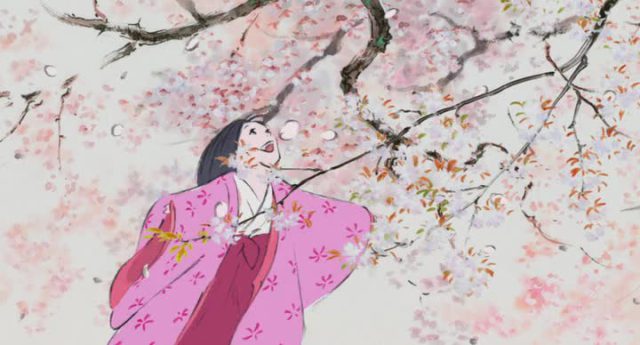
Produced by the legendary Studio Ghibli and based on the Japanese folktale, The Tale of the Bamboo Cutter, ‘Princess Kaguya’ is a far more pastoral, traditional tale. A humble bamboo cutter finds a magical, tiny girl found in a bamboo stalk. She is mystical, ethereal and possesses a rich, natural aura of beauty and strength.
This girl grows into a beautiful young woman who becomes desired by many suitors. She demands they achieve highly complex tasks to prove their worth. We soon discover Kaguya is not of this Earth and her true destiny lies elsewhere.
Inspired by Eastern brush painting, this is a beautifully told tale of the fleeting beauties of life and the transcendent moments we all strive to achieve. Each frame was drawn in pencil, a painstaking process in it’s own right, before the characters were digitally coloured.
Another Studio Ghibli veteran, Kazuo Oga, painted the backgrounds, as well as some of the close up shots of leaves in flowers, in traditional watercolors. It’s this painterly, serene-looking style that perfect helps to tell such an ancient story. Characters move with the fluidity of liquid, the gentle framing and slow, deliberate editing enhance the venerable aspects of this fable.
Studio Ghibli has always been on the forefront of magnificent stories told in an innovative and imaginative way, and ‘Princess Kaguya’ is no different.
7. The Flowers of Evil (Hiroshi Nagahama, 2013)
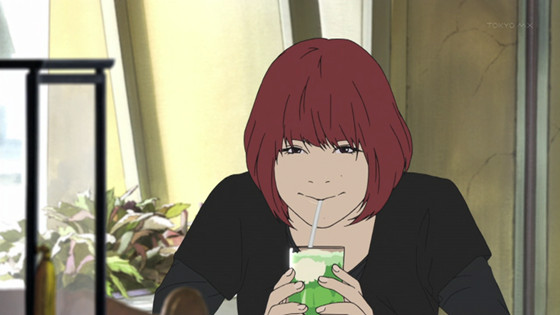
This thirteen-episode series deals with some of the darker aspects of teenage psychology and sexuality. Kasuga is a shy middle school student who’s an avid reader, his favorite book being Baudelaire’s Les Fleurs du Mal. One day he notices the girl he loves from a safe distance, Saeki, has left her gym uniform at school. He has loved this girl for a long time but had never been able to act upon it. In a fit of juvenile impulse, he steals the uniform.
‘Flowers’ was filmed using rotoscoping, the technique of animating over pre-recorded footage. This brings a sense of natural movement to an animated world. The contrast between movement and the mores tilted, traditionally rendered backgrounds presents an air of surreal isolation. Being out of place with your world is something most teenagers feel, and this technique brings that emotion to the story in almost every scene.
It’s a tale of youthful perversion and manipulation, the turmoils of growing up with such confusing desires and how the world will see them. The animation expertly conveys that confusion, showing characters so fundamentally at-odds with the world around them.
6. Mindgame (Masaaki Yuasa, 2004)
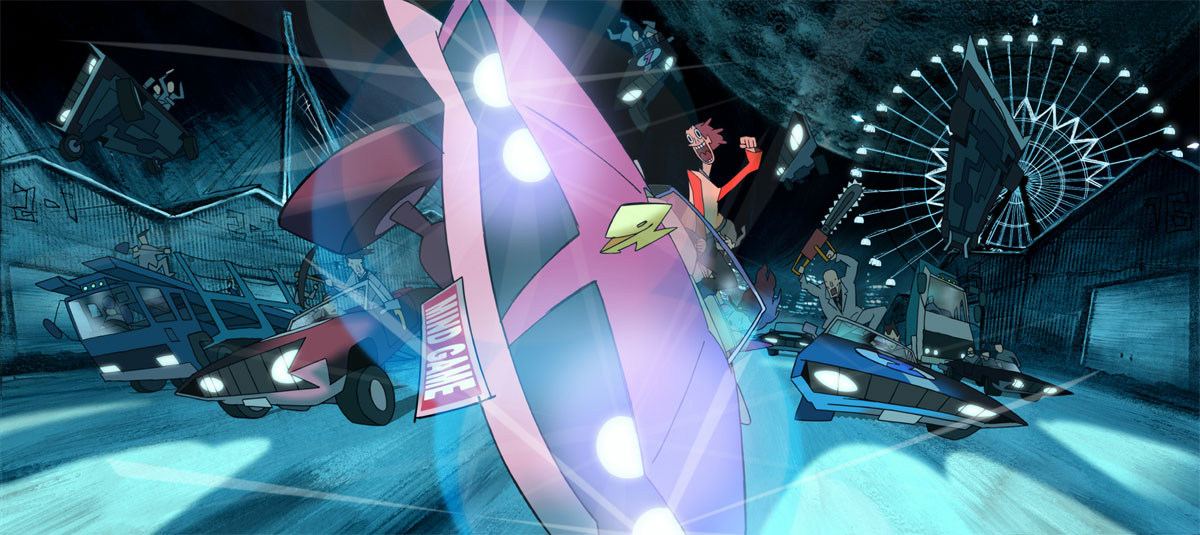
Though it doesn’t necessarily contain a cohesive and concrete plot, the expressive and highly symbolic nature of ‘Mind Game’ ensures that is not an easily forgotten anime feature.
This psychedelic collage tells the story of Nishi, a meek young man who dreams of becoming a great manga artist as well as marry his childhood crush, Myon. A clash with some Yakuza at a family dinner results in Nishi being transported to a sort of limbo, where meetings with god-like entities (whose form changes constantly) and access to strange portals are just the start to this abstract odyssey.
The director stated that he wished to throw as many disparate styles on screen to convey both the utterly abstract narrative as well as to show audiences would remain enthralled as long as the themes and ideas of the story would be well told. Live-action photography spliced into scenes, CGI effects and 3D camera movements within animated frames.
Crudely drawn sketches mixed with highly detailed backdrops. He deforms characters on the outer to express their inner truths. He uses juxtaposition to contrast reality with dreamscapes. His editing is a controlled chaos highlighting his vision to bring such a unique tale to life. And the climax in itself is animated splendour, a visual cacophony is totally one of a kind and will likely never be seen again.